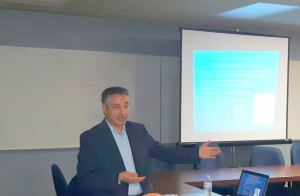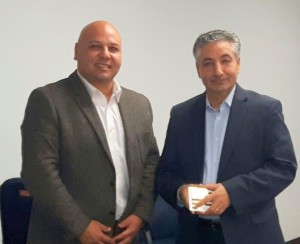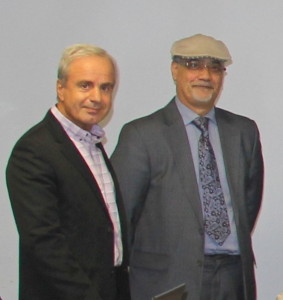Nutritional Sciences & Dietetic committee is pleased to present the following seminar, Nutrient-Sensing Mechanisms Controlling Food intake and Metabolism: Key Role of Taste Receptors, on Sunday October 23, 2016:
Program:
2:30 pm – 3:00 pm: Registration and Networking
3:00 pm – 4:00 pm: Nutrient-Sensing Mechanisms Controlling Food intake and Metabolism: Key Role of Taste Receptors,
Khosrow Adeli, PhD, FCACB, DABCC, Professor, Department of Biochemistry, University of Toronto
Head, Clinical Biochemistry, The Hospital for Sick Children
4:00 pm – 4:30 pm: Networking
Please note that this Seminar is presented in English and open to the public, no membership is required.
Location: Committee room No. 1, North York Civic Centre, 5100 Yonge Street, Toronto, Ontario, M2N 5W4
For further information please contact < info <at> csifns.ca >
Presentation Abstract:
Emerging evidence indicates that the intestine plays a key sensing and signaling role in the physiology of energy
homeostasis by controlling satiety, energy intake, and energy expenditure. Upon nutrient ingestion, an intestine-brain axis is triggered involving signals from the upper intestine by vagal afferents that communicate with the nucleus of the solitary tract (NTS) in the brain. Satiety signals from the gastrointestinal tract such as small lipids in the upper intestine control food intake by afferent sensory neurons that signal to the NTS to regulate nutrient consumption. Besides this neuronal pathway, many hormones (leptin, insulin, ghrelin, and peptides like cholecystokinin (CCK) and glucagon-like peptide-1 (GLP-1) contribute to the regulation of food intake by modulating the responses of the brain to the intestinal signals. Lipid ingestion can also regulate glucose homeostasis involving a gut-brain-liver axis. As part of the brain-liver axis, the hypothalamus plays a major role in this process as experimental lipid infusion in this area blocks hepatic glucose production, an effect that is reverted after hepatic vagotomy. Moreover, blocking the sensitivity of the hypothalamus to lipids promotes overfeeding resulting in obesity and insulin resistance.
During the transition from fasting-to-fed states (immediately following meal ingestion), entroendocrine cells (L- and K-cells) in the proximal and distal small intestine are stimulated, possibly through a combination of neuro-hormonal pathways and direct nutrient stimulation, to secrete incretins, GLP-1 and gastric inhibitory polypeptide (GIP). GLP-1 together with postprandial hyperglycemia stimulates the pancreatic beta-cells to secrete insulin, thereby increasing circulating insulin levels. Postprandial hyperinsulinemia acutely suppresses lipoprotein assembly and secretion in the liver, and increased GLP-1 secretion may also have a similar function, reducing hepatic lipid export postprandially. There is further evidence in animals that a gut-brain-liver axis is operative and thus the accumulation of certain lipids (such as long-chain fatty acids) in the upper intestine suppresses liver glucose production through action of the gut-peptide hormone CCK.
In this presentation, Dr. Adeli will give an overview of the central and intestinal mechanisms that mediate
nutrient sensing focusing on the key role of gut peptides, particularly GLP-1 and GLP-2.
He will also present some of his recent studies examining the role of these gut peptides in regulating
dietary fat absorption and metabolism.
Best Regards,
Nutritional Sciences & Dietetic Committee
Canadian Society of Iranian Food and Nutritional Scientists
Event Pictures:








